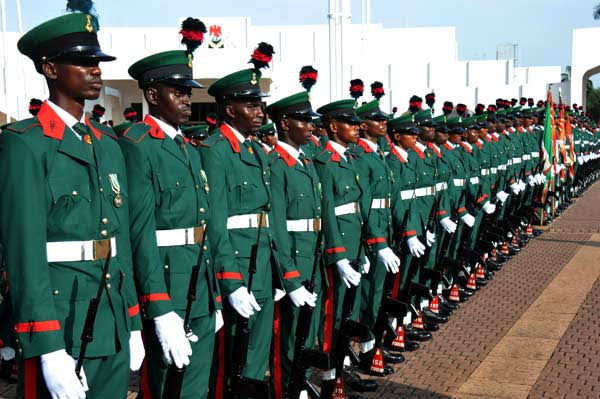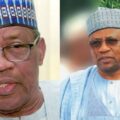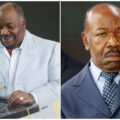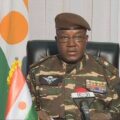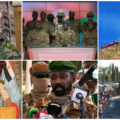The Nigerian Army, a critical component of the nation’s defense system, operates with a meticulously structured hierarchy of ranks.
Each rank carries distinct responsibilities, reflecting a combination of experience, leadership, and specialized skills.
In this article, we delve into the details of Nigerian Army ranks, exploring the duties and responsibilities associated with each tier.

1. Private (PTE)
At the base of the hierarchy is the rank of Private. Privates undergo fundamental military training and perform essential duties such as maintaining equipment, following orders, and participating in drills. Their responsibilities lay the groundwork for their progression within the military structure.
2. Lance Corporal (LCPL)
Upon advancement, a soldier becomes a Lance Corporal.
In this role, individuals take on increased responsibilities, including the supervision of Privates.
Lance Corporals play a vital role in the training and guidance of newer recruits.
3. Corporal (CPL)
Corporals occupy a supervisory position within the Nigerian Army.
They are responsible for leading small groups of soldiers, ensuring discipline, and executing orders from higher-ranking officers.
Their role is crucial in maintaining order and efficiency within the military unit.
4. Sergeant (SGT)
Sergeants play pivotal roles in executing orders and overseeing the work of lower-ranking soldiers.
They are expected to provide leadership on the field, contribute to training programs, and ensure that military operations run smoothly.
5. Staff Sergeant (SSG)
Staff Sergeants hold supervisory positions, often leading specialized units or teams.
Their responsibilities extend to planning and coordinating tasks within their designated units, requiring a higher level of expertise and leadership.
6. Warrant Officer Class II (WO2)
As a senior non-commissioned officer, the Warrant Officer Class II holds a position of authority.
They provide guidance and expertise, especially in technical or specialized areas.
Their responsibilities may include training and mentoring junior officers and soldiers.
7. Warrant Officer Class I (WO1)
The highest-ranking non-commissioned officers, Warrant Officers Class I, take on significant leadership roles.
They often serve as advisors to commissioned officers and are responsible for maintaining discipline and morale within the ranks.
8. Second Lieutenant
Commissioned officers begin with the rank of Second Lieutenant.
They are responsible for leading platoons, overseeing training exercises, and ensuring the welfare of their subordinates.
Second Lieutenants are at the forefront of executing orders from higher-ranking officers.
9. Lieutenant
Lieutenants, as mid-level officers, are entrusted with larger groups of soldiers.
Their responsibilities include planning and coordinating operations, maintaining discipline, and serving as a bridge between enlisted personnel and higher-ranking officers.
10. Captain
Captains hold senior commissioned officer positions, typically commanding companies.
They are responsible for the overall leadership of their units, making strategic decisions, and ensuring the readiness of their soldiers for various missions.
11. Major
Majors take on roles involving strategic planning and coordination.
They may be assigned to staff positions where they contribute to the development of military policies and plans.
Their responsibilities extend beyond tactical operations to broader organizational functions.
12. Lieutenant Colonel
Lieutenant Colonels are tasked with overseeing battalion-level operations.
Their responsibilities include ensuring the efficiency of their units, strategic planning, and implementing directives from higher-ranking officers.
13. Colonel
Colonels, leading regiments, play essential roles in military operations.
They are responsible for planning and executing large-scale missions, overseeing training programs, and contributing to the development of military strategies.
14. Brigadier General
Brigadier Generals hold high-ranking positions, overseeing larger military formations.
Their responsibilities encompass strategic planning, policy development, and the overall coordination of military activities within their designated areas.
15. Major General
Major Generals, overseeing divisions, play crucial roles in shaping the broader military landscape.
Their responsibilities include developing operational plans, coordinating activities at a higher level, and contributing to the formulation of military policies.
16. Lieutenant General
Lieutenant Generals hold senior leadership roles, often serving in critical positions within the Nigerian Army.
Their responsibilities extend to high-level decision-making, strategic planning, and advising top military officials.
17. General
The pinnacle of the military hierarchy, a General, usually serves as the Chief of Army Staff.
This role involves the highest level of responsibility, overseeing the entire army, making policy decisions, and serving as a key advisor to government officials on military matters.
Conclusion
In conclusion, the structured hierarchy of Nigerian Army ranks reflects a system designed to ensure effective command, leadership, and execution of military operations.
Each rank comes with specific responsibilities, and as individuals progress through the ranks, they take on more significant roles in shaping the defense and security of the nation.
Understanding these ranks and their associated duties is crucial for individuals aspiring to serve in the Nigerian Army and for civilians seeking insight into the organization’s operational structure.

